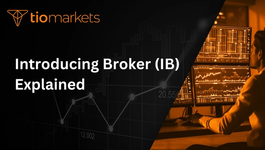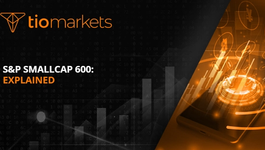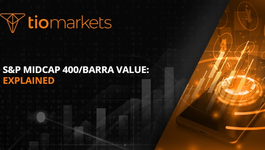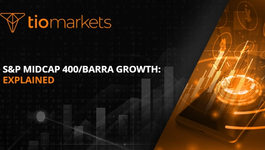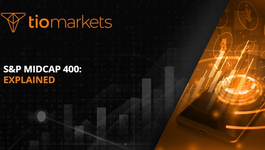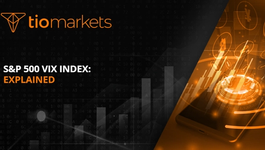Enterprise Risk Management: Explained | TIOmarkets
BY TIOmarkets
|July 5, 2024Enterprise Risk Management (ERM) is a critical aspect of trading that involves identifying, assessing, and preparing for any dangers, uncertainties, and risks that could potentially impact an organization's capital and earnings. ERM is a comprehensive approach that covers a wide range of risks, including financial, strategic, operational, and other risks. This glossary entry aims to provide an in-depth understanding of ERM, its importance in trading, and how it is implemented in organizations.
ERM is not just about mitigating risks, but also about understanding and managing them in a way that can even create value for the organization. It is a continuous and developing process that is woven into the organization's business strategy and implemented across the organization. It is about making strategic decisions that manage the trade-offs between risk and return.
Understanding Enterprise Risk Management
ERM is a strategic business discipline that supports the achievement of an organization's objectives by addressing the full spectrum of its risks and managing the combined impact of those risks as an interrelated risk portfolio. It involves a detailed understanding of the potential risks that an organization may face and how those risks can be managed.
ERM is not a one-size-fits-all approach. It varies from organization to organization based on factors such as the organization's size, the nature of its operations, and the industry in which it operates. The key to effective ERM is to tailor it to the organization's unique needs and circumstances.
Components of Enterprise Risk Management
The first component of ERM is risk identification, which involves recognizing potential risks that could affect the organization. This can be done through various methods such as brainstorming sessions, interviews, surveys, and risk assessments.
The second component is risk assessment, which involves evaluating the identified risks based on their likelihood and potential impact. This helps in prioritizing the risks and focusing on the ones that are most significant.
Implementation of Enterprise Risk Management
Implementing ERM involves developing a risk management plan that outlines how the identified risks will be managed. This includes determining the risk response strategies, which could involve avoiding the risk, reducing the risk, sharing the risk, or accepting the risk.
The implementation of ERM also involves monitoring and reviewing the risk management plan to ensure its effectiveness and making necessary adjustments as required. This is a continuous process that requires regular updates to the risk management plan based on changes in the organization's environment and operations.
The Role of Enterprise Risk Management in Trading
In the context of trading, ERM plays a crucial role in managing the various risks associated with trading activities. These risks could include market risk, credit risk, liquidity risk, operational risk, and legal risk, among others.
ERM in trading involves identifying these risks, assessing their potential impact on the trading activities, and developing strategies to manage them. This helps in making informed trading decisions and mitigating the potential losses that could arise from these risks.
Market Risk Management
Market risk is the risk of loss due to changes in market factors such as prices, rates, and indices. ERM in trading involves managing this risk through various strategies such as diversification, hedging, and use of derivatives.
For example, a trader could diversify their portfolio across different asset classes and geographical regions to spread the risk. They could also use hedging strategies to offset potential losses from one investment with gains from another.
Credit Risk Management
Credit risk is the risk of loss due to a counterparty's failure to fulfill their contractual obligations. ERM in trading involves managing this risk through strategies such as credit analysis, collateral management, and credit default swaps.
For example, a trader could conduct a thorough credit analysis of the counterparty before entering into a trade to assess their creditworthiness. They could also require the counterparty to provide collateral as a security for the trade.
The Benefits of Enterprise Risk Management in Trading
Implementing ERM in trading can provide several benefits. Firstly, it can help in making informed trading decisions by providing a comprehensive understanding of the potential risks and their impact. This can lead to better risk-adjusted returns.
Secondly, ERM can help in reducing the potential losses from trading activities by managing the risks effectively. This can enhance the organization's financial stability and resilience.
Improved Decision Making
One of the key benefits of ERM in trading is that it can improve decision making. By providing a comprehensive understanding of the potential risks, ERM can help traders make informed decisions about their trading activities.
For example, a trader could use the risk assessment results to decide whether to enter into a trade, what position size to take, and what risk mitigation strategies to use. This can lead to better risk-adjusted returns and improved trading performance.
Enhanced Financial Stability
Another key benefit of ERM in trading is that it can enhance the organization's financial stability. By managing the risks effectively, ERM can help reduce the potential losses from trading activities.
This can enhance the organization's financial stability by reducing the volatility of its earnings and improving its capital adequacy. It can also enhance the organization's resilience to adverse market conditions and economic shocks.
Conclusion
Enterprise Risk Management is a critical aspect of trading that involves identifying, assessing, and managing the various risks associated with trading activities. It is a comprehensive and strategic approach that can provide several benefits, including improved decision making and enhanced financial stability.
While ERM is not a guarantee against losses, it can significantly reduce the likelihood and impact of losses by managing the risks effectively. Therefore, it is an essential tool for any organization involved in trading.
Start Managing Your Trading Risks with TIOmarkets
Ready to take control of your trading risks? Join TIOmarkets, the top-rated forex broker that empowers you to trade over 300 instruments across 5 markets with low fees. With more than 170,000 accounts opened in over 170 countries, we provide you with the tools and educational resources to trade effectively and manage risks efficiently. Create a Trading Account today and start your journey towards strategic trading with confidence.

Risk disclaimer: CFDs are complex instruments and come with a high risk of losing money rapidly due to leverage. You should consider whether you understand how CFDs work and whether you can afford to take the high risk of losing your money. Never deposit more than you are prepared to lose. Professional client’s losses can exceed their deposit. Please see our risk warning policy and seek independent professional advice if you do not fully understand. This information is not directed or intended for distribution to or use by residents of certain countries/jurisdictions including, but not limited to, USA & OFAC. The Company holds the right to alter the aforementioned list of countries at its own discretion.
Join us on social media

Behind every blog post lies the combined experience of the people working at TIOmarkets. We are a team of dedicated industry professionals and financial markets enthusiasts committed to providing you with trading education and financial markets commentary. Our goal is to help empower you with the knowledge you need to trade in the markets effectively.
